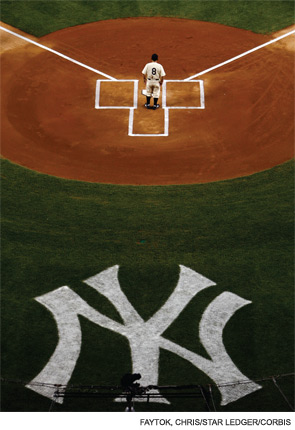
Sometimes, however, the blind eye sees, and just down from the street from Barneys, I saw a man shuffling slowly along the street, his eyes muddy and dead. My eyes were drawn to his feet, which were bare; he walked on pieces of cardboard secured with twine. The man’s toes were bloody and crusted with scabs. Had he been a patient in the nearby Northwestern Hospital, his ward team would have called in a squadron of consultants, most certainly a rheumatologist who would wonder about vasculitis and recommend an antineutrophil cytoplasmic antibody test and maybe an angiogram. The man with the bloody feet was not a patient, however, but just another passerby making his way in the shadow of soaring building of glistening glass and steel.
Pizza and Science
After my walk, I settled in at Lou Malnati’s restaurant, drinking a Stella while I waited for my sausage and pepperoni pizza amidst the roar of the crowd and sonic blasts from the big screen TV, whose vivid colors exploded above the bar like bolts of lightning. The atmosphere was feverish and the room howled with the aroma of hops and spice.
Since a deep-dish pizza takes 30 minutes to bake, I used the time to think about the deliberations of the study section that would take place over the next two days. Sadly, these are the times that try academicians’ souls. Funding rates are likely to be well less than 10% and the pressure on applicants is fierce, necessitating snazzy proposals popping with novelty and glitzy with cutting-edge technology.
“Translation” is the buzz-word now, but giving this pursuit top priority for funding can sometimes be a buzz saw, cutting down imaginative ideas and fundamental discovery research whose connection to disease seems remote at best. At its best, science is about knowledge for its own sake, although good things almost always happen when science is done right. We just can’t predict where those good things will turn up. Lest I remind you, the Nobel Prize for medicine this year was awarded to an investigator, Jules Hoffman, whose discovery of Toll-like receptors came from a study of how fruit flies fend off infection. Who knew flies got disease? I thought flies transmitted disease.
